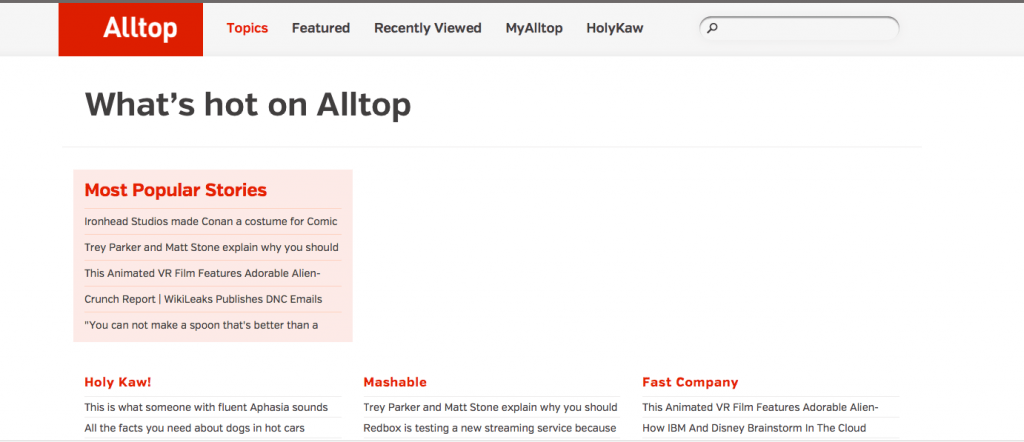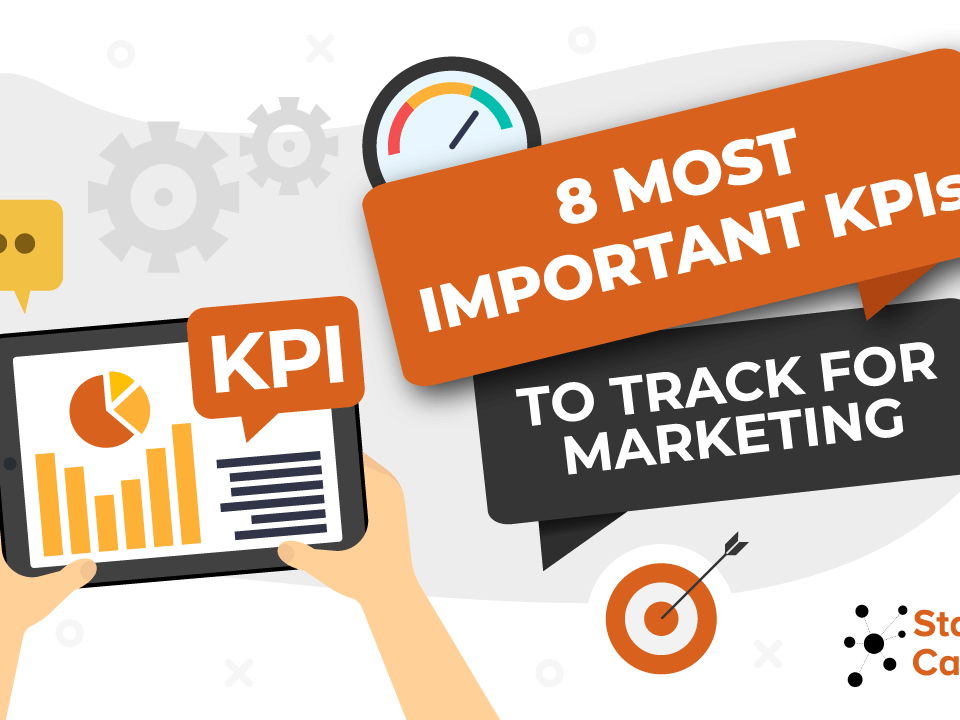
6 Actionable Email Marketing Tips to Instantly Improve Your CTR
July 29, 2016
5 Best SEO Tools That Will Skyrocket Your Rankings
August 2, 2016This article was originally published at my marketing blog, 99signals on July 23, 2016.
Generating backlinks for your website still remains one of the key factors in improving your site’s rankings on search engines. Yet we often rely on posting comments and guest posting to fetch backlinks, ignoring other link building strategies.
In this article, I will show you 10 highly effective, yet rarely used, ways to get backlinks.
10 Powerful and Rare Techniques to Get Backlinks
1. Find Backlinks from “Best of” Blog Posts
This particular method of generating backlinks is borrowed from Brian Dean at Backlinko and it’s insanely effective.
Here’s what you need to do:
Step 1: Use these following search strings on Google
- “Best (TOPIC) Blog Year”
- “(TOPIC) blogs to read”
- “My Favorite (TOPIC) blogs”
Any of these above searches will show you a list of “best of” blogs in your selected topic.
Step 2: Create a new Google Doc and add links to any quality blog that you’d like to get a backlink from
Step 3: Reach out to these blogs to get your links.

Many of these blogs will allow you to post a comment along with a link to your website. One way to generate quick backlinks is to post thoughtful comments on any of the articles on these blogs that you deem worthy to get a link from. Make sure your comment is THOUGHTFUL. Instead of posting “Great article”, think of creative ways to appreciate the kind of information the author has provided in the article. You may even ask a question.
But you may be thinking that there are blogs which simply don’t allow you to provide a link to your website. They may be using Facebook comment system or Disqus to manage and moderate their comments. In such cases, how do you generate backlinks from these sites? Well, that’s where you need to use the other techniques mentioned in this article to reach out to these blogs.
2. HARO (Help A Reporter Out)
HARO is one of the best ways to generate quality backlinks from authority news sites.
Here’s how it works:
- Sign up for HARO as a source here.
- You’ll receive three emails per day on weekdays from reporters looking for sources. Look out for source requests relevant to you and your niche
- Respond with some helpful content and your credentials
With HARO, you can get backlinks from authority news sites such as WSJ, Mashable, Inc, FastCompany, Reuters, etc.
3. Infographics
Infographics are not just engaging but they are also great for SEO. Yet most people ignore infographics because they wrongly assume that it’s expensive and time-consuming.
Using tools such as Canva, Infogr.am, and Piktochart, you can create fancy infographics in a matter of minutes. Another way to create beautiful infographics is to outsource it using sites such as Fiverr or Upwork.
Once your infographic is ready, it’s time to promote it. Follow these steps:
- Submit your infographic to any of these sites:
- Visual.ly (I recommend this site because it’s free and it’ll get you a backlink right away)
- DailyInfographic
- AmazingInfographics
Bonus: 38 Infographic Submission Sites to Promote Your Infographic and Get Authoritative Backlinks
2. Reach out to bloggers in your niche and offer them the infographic for free as a guest post
This is one of the easiest ways to get backlinks from sites with a high domain authority. Everyone loves informative infographics and most of the sites you reach out to will gladly accept to include your infographic in one of their articles.
Pro Tip: Check out this detailed guide on how to create infographics and generate high-quality backlinks
4. Submit Your Website to Feedback Sites
There are many feedback websites out there where you can submit your site and get critiqued on your site’s design and content. The great thing about these feedback sites is that almost of them provide a link back to your site.
One of my absolute favorite feedback sites is Criticue.com. Once you sign up on Critique, you’ll be asked to review other sites to earn free credits. Each review gets you 1 credit. In my experience, posting 3 reviews of other sites will fetch you a review of your own site and a quality backlink.
5. Submit Your Site to Blog Aggregators
Blog Aggregators are sites which list blogs from different industires. Examples include AllTop, BlogCatalog and Blogarama.

You can get a high-quality ‘dofollow’ links from most blog aggregators for free in three easy steps:
- Submit your site (in most cases, the RSS feed of your blog)
- Add a special HTML code to your site to confirm your ownership of the site
- Wait for the blog aggregator to review your site
When it’s approved, you will get your own page on the blog aggregator listing all your articles.
6. Link Roundups
There are lots of high quality blogs that do link roundups. Link roundups are weekly or monthly blog posts that link out to great content in their respective niche.
On Startup Cafe blog, we usually do a weekly roundup of social media news and call it ‘This Week in Social Media’ and provide links to social media sites with interesting news stories that occurred that week. You will find blogs that do similar roundups in your niche as well.

Here’s how it works:
1. Your first task is to find link roundups in your niche. Use the following search strings:
- “your keyword” + “link roundup”
- “your keyword” + roundup
- “best of” + “your keyword”
- “your keyword” + “this week”
2. Once you find a blog that you’d like to target for backlinks, pitch your content to the person who runs the blog. You can use the below script:
Hey NAME,
I know you like to make compilation articles about everything [TOPIC] – so I just wanted to send a few of my recent ones your way. I hope this is OK!
[LINK TO ARTICLE]
[LINK TO ARTICLE]
Cheers,
[YOUR NAME]
[YOUR BLOG URL]
Just sit back and wait for the person to respond. If your content is the right fit for the blog’s roundup, then you’ll get a quality backlink for your site.
7. The Moving Man Method
This is yet another technique which I learned from Brian Dean’s blog and I’ve found it extremely useful.
Here’s how the Moving Man Method works:
Step 1: Find sites in your niche which have either shut down or changed their names and URLs.
Step 2: Find sites linking to the old URL.
Step 3: Reach out to these sites and let them know about their outdated link.
To explain this technique in a better way, let’s take the example of Moz, a popular SEO tool run by SEO Guru, Rand Fishkin. A while back though, Moz was operating as an SEO agency named SEOMoz. As a result, they had to change the URL from seomoz.org to Moz.com.
Sure, if you visit seomoz.org, it redirects to moz.com. So the links used by sites linking to seomoz.org aren’t broken, but they’re outdated. This is because the link points to the old URL and the anchor text has the old brand name.
As you may realize, this is a huge opportunity for people running SEO/Marketing blogs to reach out to sites that are still using the seomoz.org link in their content. And there are plenty of sites doing just that.
In order to make this technique work for you, you need to keep an eye out for sites that are either rebranding or changing names. Use PRWeb to see whether there are any brands in your niche that have recently rebranded. Use this search string – “your keyword” + rebrands”. Do a similar check on Google News as well.
Once you’ve found a site which has rebranded or changed its URL, it’s time to reach out to sites which are still using the old URL in their content. Just copy the URL and paste into your backlink checking tool of choice (I recommend Ahrefs). You’ll find dozens of sites which are still linking to the old resource.
The last step in the Moving Man Method to reach out to these sites and give them a heads up about the outdated link they are using in their content. And then give a subtle suggestion to add your link to their site.
To learn more about the Moving Man Method, click here.
8. Scoop.it Backlinks
Scoop.it is a site where people aggregate their favorite content around the web into a magazine format.
It’s also an excellent place to get high-quality “nofollow” backlinks and boost your referral traffic. So how do you go about fetching backlinks on Scoop.it? It’s quite simple really.
An active Scoop.it user usually has curated magazines which have hundreds of followers. This means that your content can be get in front of hundreds of people. Follow these two simple steps to get people to share your content on their Scoop.it magazine:
Step 1: Give a search on the topic of your content. Ex: Social Media Marketing. Find users who have magazines with lots of followers and views.
Step 2: Pitch your content to these people by using Scoop.it’s ‘suggest’ feature. You can share the same content with 5 people in a day and chances are that about 50% of them will share it with their network.
9. Google + Backlinks
Google + may have failed spectacularly as a social network, but it still shows up prominently on Google, mainly because it’s owned by the search engine giant.
But did you know Google+ allows you to get ‘dofollow’ backlinks right from your Google+ profile page? Here’s a glimpse of my Google+ profile. As you can see, I’ve given links to my marketing as well as wellness blogs.

In order to make this a high-quality backlink, make sure that you are quite active on Google+. Share content and interact with other people on Google+. This will make you backlink pretty powerful in the future.
10. Provide Testimonials
Consider giving a testimonial for a product that you really love using. All companies love showing off customer testimonials on their home page or have a dedicated page for customer testimonials.
Once you’ve written the testimonial, make sure you let them know that they can include your testimonials on their home page or testimonials page.
Get Started
Now that you these powerful link building techniques, it’s time to get started and test these techniques out.
Which link building strategy gets you the best backlinks? Let me know in the comments section.



